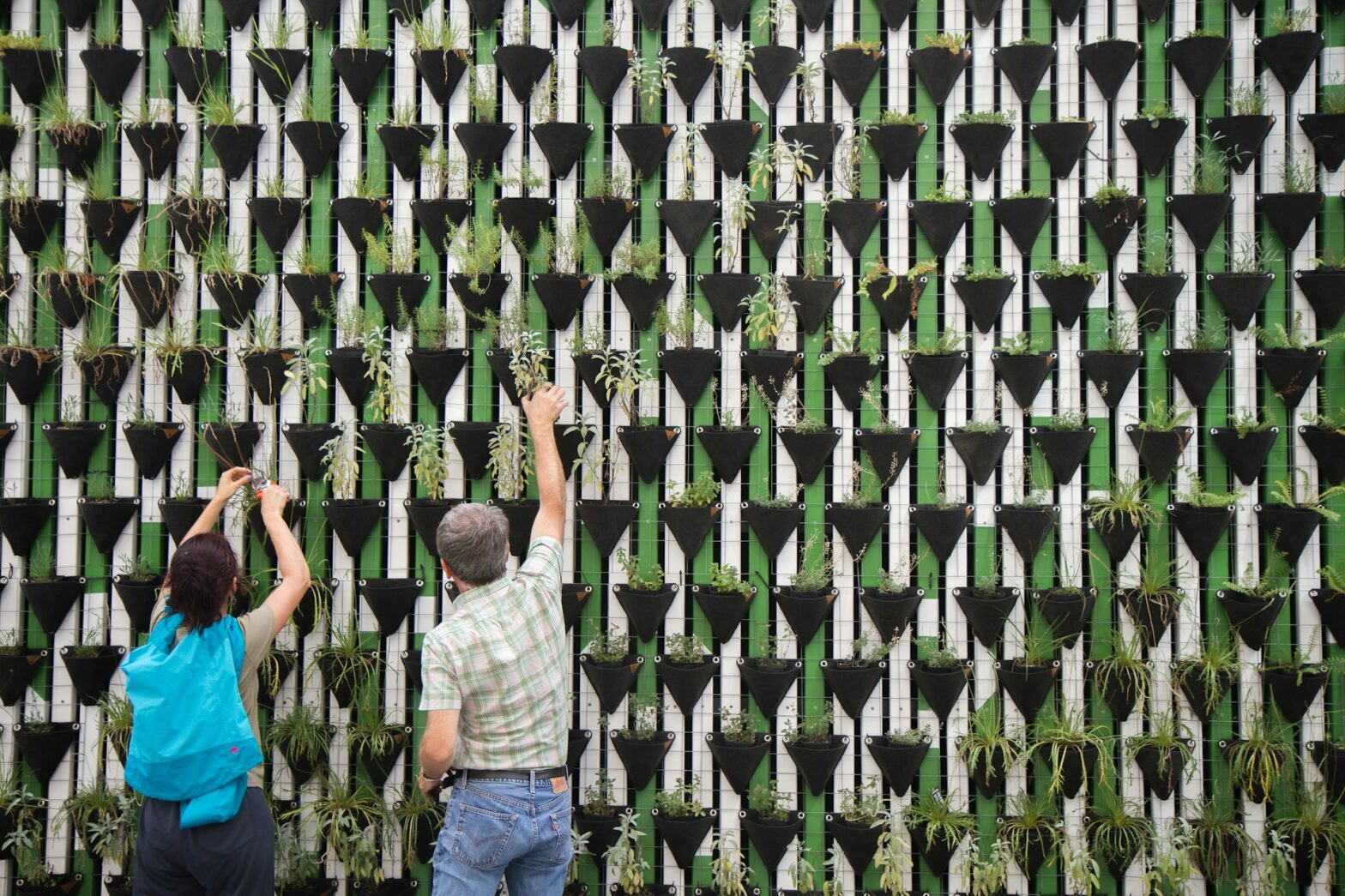We all know that lack of ground space can be a real obstacle to having a flourishing and green garden. But don’t worry, because vertical gardening is here for you! There are several ways to maximize the use of your space while enjoying the many benefits of gardening at height. In this article, we have gathered four of the best vertical gardening techniques.
1. The green wall
The green wall, also known as a wall garden or vertical garden, is an excellent option for those who want to optimize their horticultural area. Green walls are usually made up of plants that grow directly on the wall structure or on supports specifically designed to keep the plants in place. Here are a few advantages of this technique:
- Adaptability: You can adapt a green wall to suit almost any space, from your small balcony to a large exterior wall.
- Adding biodiversity: A green wall allows for the cultivation of a wide variety of plants to create a true miniature ecosystem.
- Aesthetics: A green wall brings a touch of aesthetics to your garden thanks to its beautiful shades of green and the possibility to add colorful flowers.
How to create a green wall?
To create your own green wall, start by choosing the appropriate support according to your space. Several options are possible:
- Perforated panels to be fixed to the wall on which pots are attached,
- Metal frames filled with potting soil with pockets for plants,
- Hydroponic systems with gutters to circulate the water.
Do not forget to ensure good drainage when installing the green wall and select plants suitable for your region for better adaptation.
2. Hanging Planters
The hanging planters represent a simple and effective solution to optimize space and enjoy high-level gardening. They consist of hanging flower pots which generally contain trailing or climbing plants. Here are some advantages of this method:
- Maintenance ease: Hanging planters are accessible and easy to water, trim and maintain.
- Variety of plants: You can grow all kinds of plants in hanging planters, including cherry tomatoes, aromatic plants and even small vegetables.
- Decoration: Hanging planters add a touch of decoration to your outdoor or indoor space depending on their design and the chosen plants.

How to create hanging planters?
Choose lightweight and durable pots with good drainage. Then select the plants you want to install and secure them firmly using a rope, a wire cable or any other method suitable for your environment. Finally, hang your planters on hooks that have been previously installed.
[bzkshopping keyword=”jardiniere suspendue”]
3. Trellises and Vegetated Screens
The trellises and vegetated screens are a popular technique to maximize space in a garden through the cultivation of climbing plants. This type of structure can be used both to grow vegetables and to create a vegetal decor. Here is why this method is interesting:
- Versatility: Trellises can be used to cultivate many types of plants, such as climbing vegetables, perennials, shrubs, and even some fruit trees.
- Space Reclaimer: Green screens allow for the reclamation of spaces along fences, walls, and ducts to cultivate plants.
- Privacy screen: Vegetal screens can be used to create a natural barrier to protect your private space from neighbors’ view.
How to build a trellis or a plant screen?
To construct this structure, start by choosing the material for the trellis or screen: wood, bamboo, metal or plastic are possible options. Then position the structure, ensuring it has good stability. Then plant the chosen climbing species at the base of the support. It is also possible to use certain fences or wire meshes directly as a support for plant growth.
4. Vertical Gardening Towers
The vertical gardening towers, often used in urban agriculture, allow plants to be grown on several different levels. These structures can be freestanding or fixed to a wall. They offer the following advantages:
- Varied Cultures: Many types of plants can be grown in these towers, including aromatic herbs, small fruits and vegetables, as well as decorative plants.
- Space saving: By adding multiple layers of cultivation, you increase your production capacity without taking up more floor space.
- Eco-friendly solution: These towers allow water conservation through their recirculation system and the materials used can be recycled.
How to build a vertical gardening tower?
Start by choosing the material to build the structure of your tower: plastic, metal, or wood. Then create compartments to accommodate the plants taking care to provide good drainage. You can also opt for raised systems with stacked pots or a rotating carousel. Finally, install your plants and ensure that each level receives enough light and water to guarantee good growth.
Vertical gardening is an excellent solution for maximizing the use of your available space. Whether you choose to prioritize building a green wall, hanging planters, trellis and green screens, or vertical gardening towers, don’t forget to carefully study the needs of your plants and provide them with all the necessary care. So why not try these innovative techniques right now and enjoy a beautiful elevated garden?

